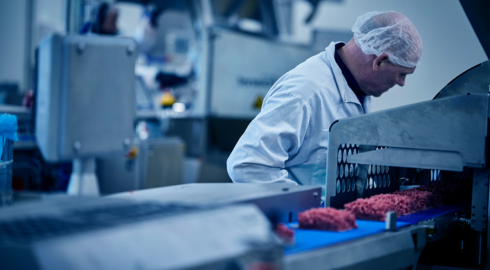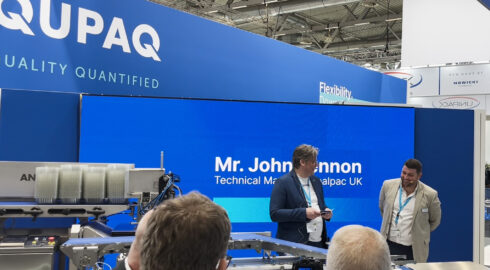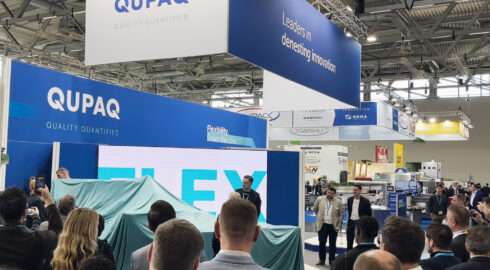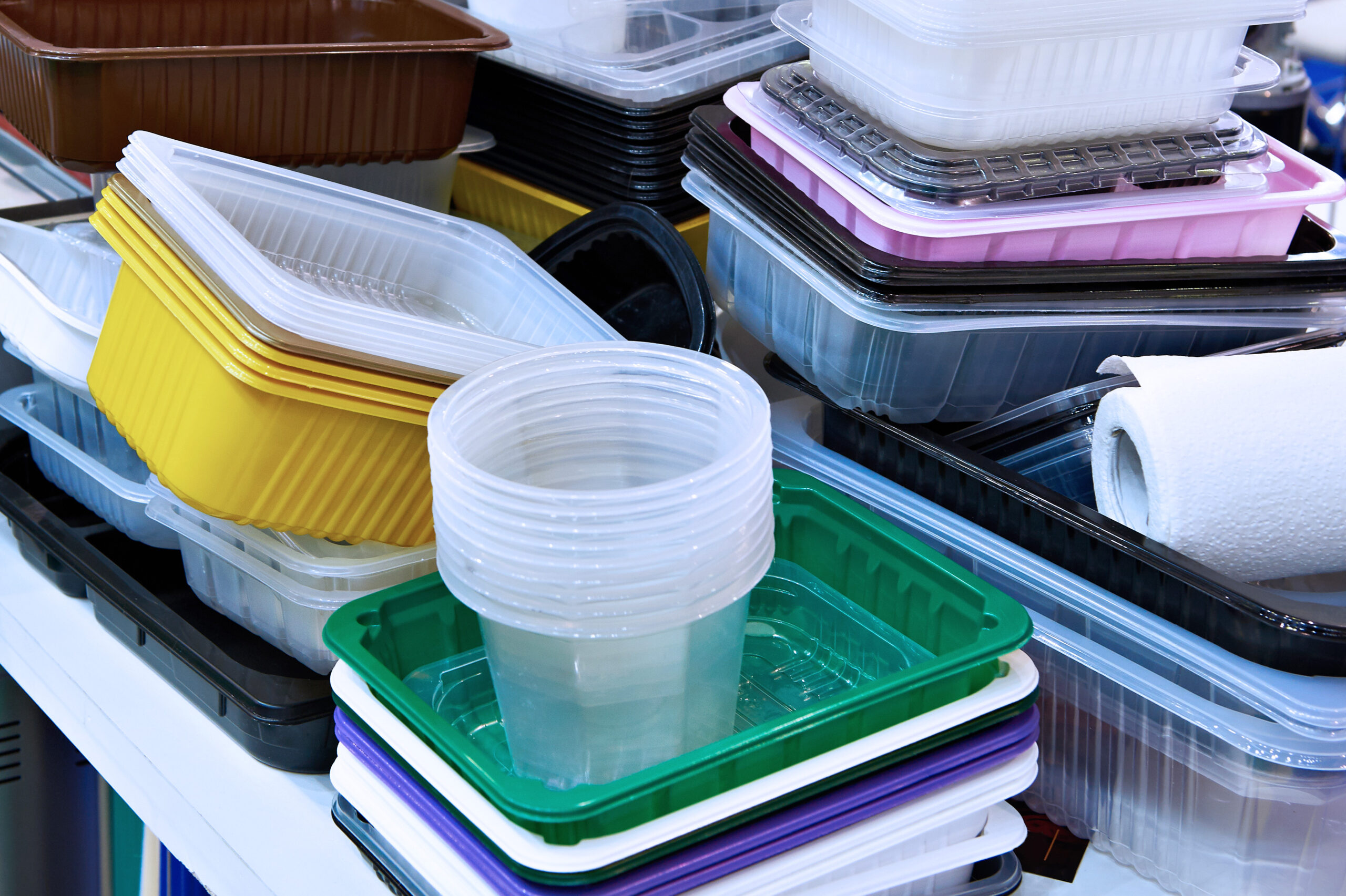
Will They Make the Cut?
In 2023 QUPAQ will launch a service for Food Manufacturers using trays on their production lines. It is basically a database of all the test results from QUPAQs Test Facility.
How Your Choice of Tray and Manufacturer Can Ensure Project Success
It may seem like a simple job. Changing the trays used on the production line. And in most cases, it won’t pose any problem at all. But when the problem is there…
Perhaps you have found a different vendor of trays, that are more cost-efficient. It is basically the exact same tray, visually, just from a different source.
Most trays in the world use a common size and shape designed for retailer preference. But even if they follow the same standardized format, and look exactly the same – even created from the same mould – they may not be the same.
Different vendors can have microscopic differences, that could be what tips the scale from success to failure. It could be small differences in weight, rigidness, the shape and size of the bevel. This can even differ from the same vendor, if batches are made different places.
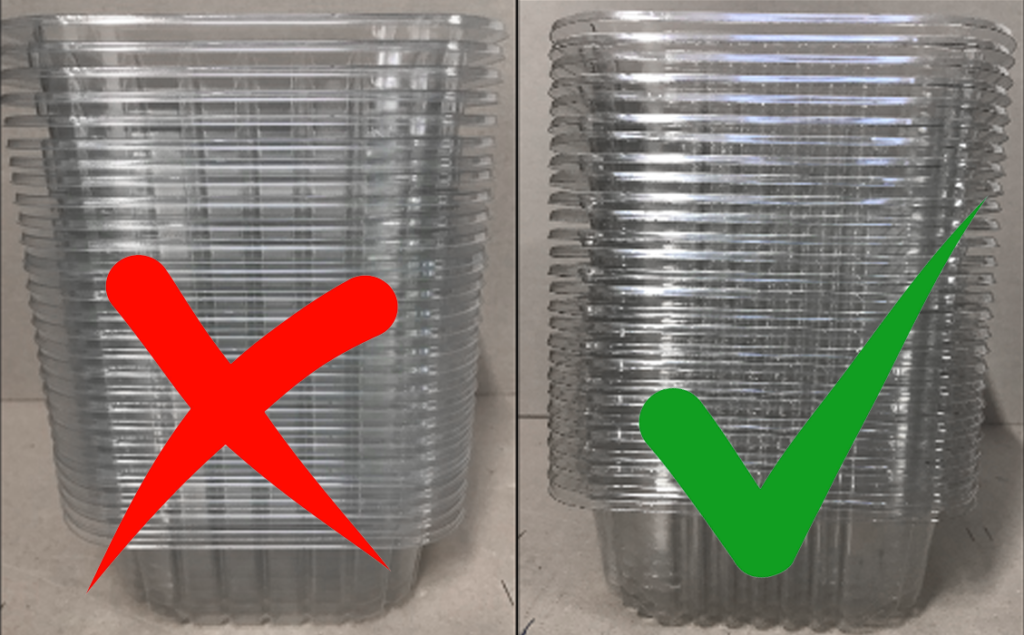
In the image you may notice in the nest of trays on the left, that there is a difference in the gap in the middle. The nest is not evenly spaced. And the difference is too big to not cause an exception. That exception will also be there with suctionbased denesters, as the trays are stuck together. Also note that the nest on the right is more efficient with a lower gap size in general than the nest on the left. This lowers logistic costs. So that seems like the best choice, right?
Read also: Design for automation – How Would the Perfect Tray Look?
Or perhaps you want to change the format or material of the tray entirely. That could require a new tool to be designed for your tray denesting equipment. How can you avoid that, without seeing all your options side by side?
Help is near!
Traybase to the Rescue
In 2023 QUPAQ will launch a service for food manufacturers using trays on their production lines. It is basically a database of all the test results from QUPAQ’s test facility.
Here it is possible to search thousands of trays in several shapes, materials and sizes. This will give you a very good indication early on, if the tray has shown trouble in the past, when denested by either INTRAY or ANYTRAY products. And even the tool used. This could help you make the proper calculation if new tool investments should be added – and the changeover it could enforce on the line – or if you can use the same tool you already have.
For Food Manufacturers who still haven’t installed an INTRAY or ANYTRAY denester, Traybase will still have plenty of value to offer. QUPAQ are the leader in denesting innovation. We have seen it all. And Traybase will be a great service for anyone considering changing tray, vendor or even equipment. You can enter a desired size, shape, material and more and see all the results as a list. This gives you options and alternatives right away.
Traybase will also be of value to tray manufacturers and technology integrators and partners within the value chain. Everyone is interested in end customer value and paving the fastest way to a successful implementation and reference.
Traybase is still a work in progress, but we want to give you some insights from the vast amounts of data already.
Materials Matter
Food trays can be made from many different composites. PP being the most used material still. But many new types of material show up with an eco-friendlier footprint.
QUPAQ have had most success with CPET composites with a success rate of 96,49%. But most plastic composites have a good quality and success rate.
Even a difficult material such as aluminum have a very high success rate at 84,21%. Aluminum can be difficult to denest at high capacity, without the denester ripping the trays apart at high speeds. INTRAY is especially a strong choice for automatic denesting of aluminum trays.
On the bottom of the list is paper based trays. These have the same difficulties as aluminum – they can be ripped apart – but they also tend to be less rigid and difficult to predict at high speeds. Research in paperbased trays is needed still to make them more able for automatic high capacity denesting. The success rate of these types of trays is 56,25%.
That doesn’t mean you should disregard these, if you believe they are the right choice for you. Just be aware of the challenge they present with added implementation costs.
Vendors Matter Too…
Tray manufacturers pay much attention to their products ability to be denested efficiently – some more than others. They are highly specialized and know the ordeals food manufacturers must go through to implement a new tray in the setup.
In general, the big players in tray manufacturing have a very high success rate. Klöckner Pentaplast, Faerch, Bartling, Pro-Pac and Plus Pack all score above 92%. It is few trays that have been too challenging for automation and they were either designed for a very specific purpose or have been replaced by new designs since.
It doesn’t make much sense to look at the bottom of the list here, as they are predominantly producing Paperbased trays. But in all honesty QUPAQ do have vendors that never had their trays tested successfully with common composite materials also. Mostly due to differences in the gap sizes in the nested trays that are not within an expected tolerance.
How Can I Get Access?
Traybase will be a free service for all to use, only requiring profile registration. It is still in development and only public to a range of selected beta-testers currently.
Feel free to contact us if you have any questions. Even if you are not interested in QUPAQs product portfolio, but just on the lookout for the perfect tray that can ensure your project success. That’s what Traybase will be all about.
You can also have us test your trays and get your own testresult: Submit trays for evaluation
Want to be the first to know when Traybase launches? Sign up for our newsletter below.



